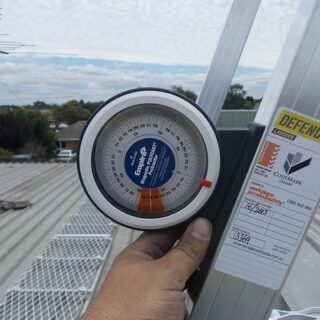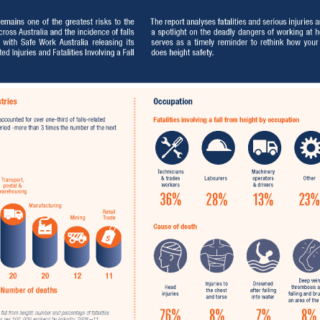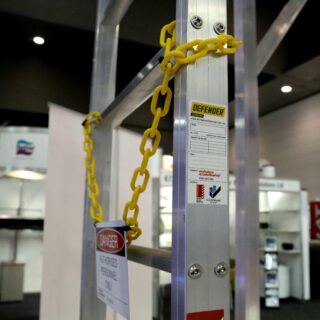Ladder inspections. Are they necessary?
Ladders are often overlooked when it comes to height safety, but as one of the most used pieces of height safety systems on-site it can be the most dangerous. However, even as you’re reading this, do you remember the last time your ladders were inspected?
If you can’t remember you’re not alone. Falling from heights is the third biggest cause of workplace injuries in Australia. With ladders coming in all shapes and sizes, it can be difficult to know how to ensure ladder safety in Australia and what standards they need to comply with. Our height safety specialists can provide expert advice to ensure your ladders are compliant and (most importantly) safe for your workers.
Read More
Whether you use fixed or portable ladders in your business, you have a duty of care under Section 21 of the OHS Act to provide and maintain a healthy and safe workplace for employees and others. As such, you must take all reasonable steps to ensure you eliminate or reduce any risks associated with working on ladders, including regular inspections and maintenance.
Fixed and Portable Ladder Inspections in Line with Australian Standards
As a leading provider of ladder testing and ladders risk assessment, Workplace Access & Safety not only provide the inspections you need but offer advice on keeping all aspects of your business safe – especially for those working at heights.
Our Ladders Risk Assessment – Stay on the Right Side of the Law
According to SafeWork Australia, falls are one of the leading causes of death and serious injuries in Australian workplaces. For this reason, employers should ensure that adequate safety measures are in place where there is a risk of a fall. This includes the use of ladders. National fall prevention regulations and the National Code of Practice for Managing the Risk of Falls at Workplaces require that ladders, both fixed and portable, must be regularly tested. Fixed ladders must comply with AS 1657 Fixed Platforms, walkways, stairways and ladders while portable ladders must meet the requirements of the latest editions of AS/NZS 1892 Portable Ladders to ensure that the workplace is safe.
What Needs to be Checked on a Ladder Inspection?
Portable ladders are one of the most used tools for working at heights, but they are also one of the least stable. When we carry out a ladder risk assessment, our HSE ladder inspectors will check for a number of things including damage, wear and tear, suitability for use, installation clearance and fixings, in particular the placement of the top rung and the clearances behind and in front of the ladder’s rungs. Our in-depth ladder risk assessment will also include photographs to back up our findings.
Once we’ve carried out our ladder risk assessment, we’ll provide a comprehensive but practical step-by-step plan to ensure fall prevention compliance, emphasizing the highest priority that needs to be addressed. Ladders that we certify will be tagged on-site to show that they are compliant. The status of each ladder will be catalogued using PDAs to form an electronic database to ensure that current and future compliance reporting is as straightforward and easy as possible.
Why Choose Workplace Access & Safety for Your Ladder Inspection?
As a NATA accredited advisory business, Workplace Access & Safety provide ladder inspection in Melbourne, Sydney, Brisbane and throughout Australia. In addition to our ladder inspection services, we provide the whole range of height safety inspection services in relation to working at a height. We’ve been in business since 1997, and work alongside Worksafe, Workcover, Safe Work Australia and relevant Australian Standard committees developing standards, laws and practices to improve ladder safety in the Australian workplace so you can rest assured that we understand exactly what is required. Our QR coded asset management system not only ensures onsite efficiency but allows our clients full visibility of the process.
Contact Us to Arrange Your Ladder Safety Inspection in Australia
Whether you need a portable ladder inspection, fixed ladder inspection or both, get in touch with the team here at Workplace Access & Safety by completing our online form or calling 1300 552 984.
Read Less
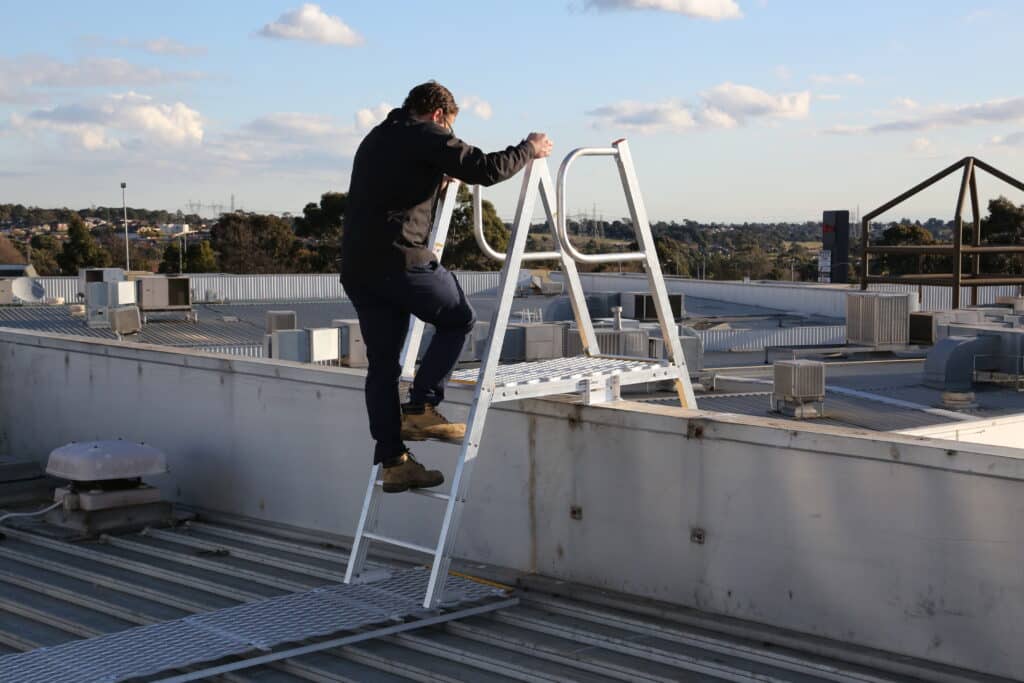
How often should ladders be inspected?
While fixed ladders should be inspected annually, portable ladders should be inspected every six months dependent on usage. While this seems like an easy task, often ladders are missed on asset registers or during equipment stocktakes. This can lead to ladders missing inspections and non-compliant ladders in use.
This is why during our inspections we implement our QR coded asset management system.so you know exactly what you have on (and off) site. Making inspections and maintenance easy.
Our ladder inspection process
Our 6-step inspection process has been designed using our 45 years’ industry experience and hands-on height safety and fall prevention knowledge. We also regularly review our processes to ensure the services we provide align with the latest industry standards and Australian regulations.
To get the most of your ladder inspection booking, we recommend combining it with a full site inspection. This ensures all your height safety systems and equipment are inspected at the same time, making it easier to align future inspection schedules and simplify preventative maintenance.
Our 6-step inspection process
This process is used for all our height safety and fall prevention inspections, including inspections for fixed and portable ladders.

1. Discovery and preparation
To ensure we know the ins and outs of your site before we even arrive, we’ll review any prior reports, documents and manuals, and asset registers you have on hand. This helps us accurately outline the services (and experts) you need for your inspection. Working with your team, we’ll book in an inspection time that works best for you as well as provide any pre-inspection details we’ll need your assistance with.

2. On-site inspection
Our certified team of experts will arrive on site and begin your inspection. For ladder inspections, this includes assessing and testing all fixed and portable ladders (both on site and those usually in the field). Our inspectors will inspect and test all fixed & portable ladders identified for inspection and QR code and date tag each item. For fixed ladders we will also provide a corresponding marked-up layout plan. Being NATA certified, our experts are licensed to perform on-site load testing on your equipment. We’ll also tag any hazardous or high-risk items that present immediate danger. Our time onsite is minimized by the use of our purpose built inspections app.

3. Expert walk-through
We walk your team (or building key contact) through the site and discuss inspection outcomes, any high-risk items to be addressed, and next steps. We find this in-person approach works best as our experts can provide immediate feedback, background to recommendations, and allows you to ask questions directly. This keeps you across all aspects of your inspection and potential actions that may be required.

4. Inspection analysis
After your inspection, our team collates all their findings and recommendations into a detailed compliance inspection report. The report provides analysis on all your height safety equipment and systems inspected, detailed next steps and any actions you need to take to be compliant. To ensure your report is of the highest quality, all reports are peer reviewed by another certified expert in our team as well as signed by our NATA signatory.

5. Inspection report & documentation
Once approved, your report will be uploaded into our client portal for easy access. To make accessing test records and certifications easier, the portal contains all assets tested and tagged (including their corresponding QR codes). Your report will contain recommendations and a step-by-step plan to address compliance concerns.
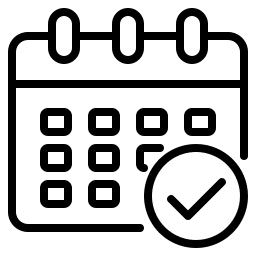
6. Check-in and reminders
Keeping up to date with what needs to be inspected when can be a challenge. That’s why our systems apply automated reminders for the next 5 years to ensure you know exactly when your equipment is due for an inspection, replacement or routine maintenance. These reminders are aligned with industry standards and Australian regulations to help you stay compliant, easily.
Compliance Report Optional Inclusions
Roof Layout Plan
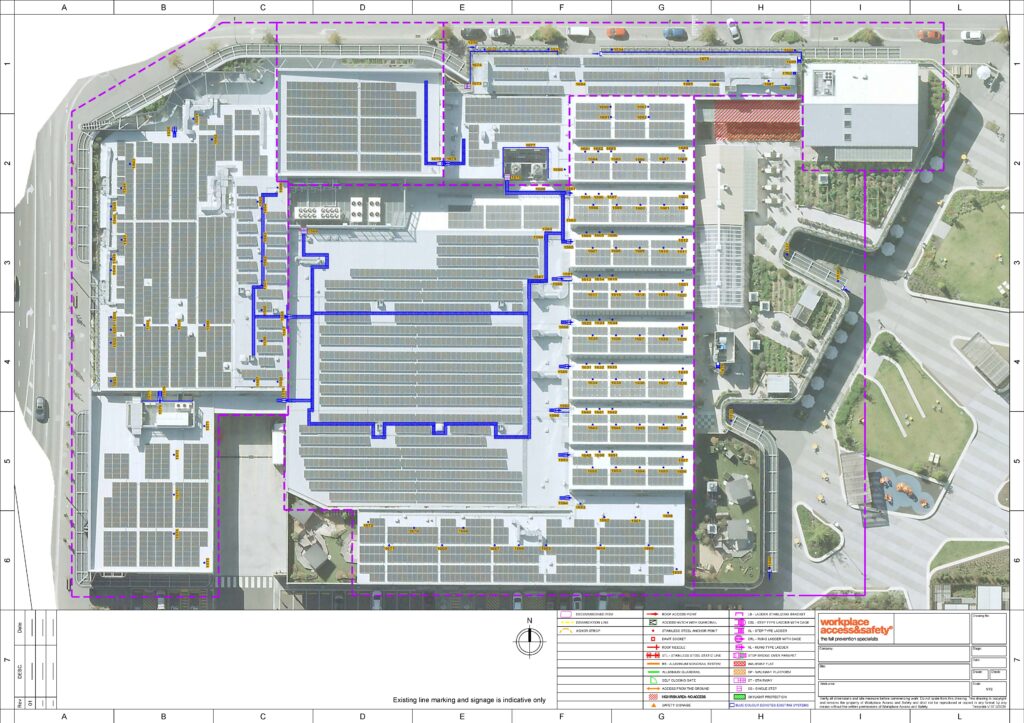
Our roof layout plans are layered over satellite images with all equipment clearly marked out.
User Manuals

We compile and include all user manuals in the report to ensure correct installation, maintenance and use.
Defect Reports
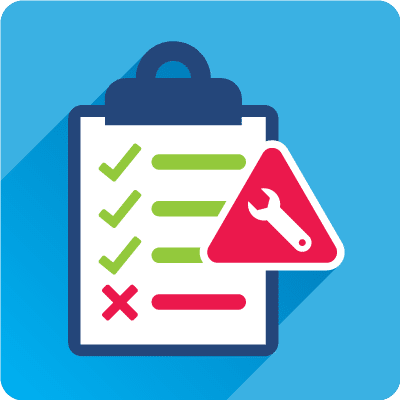
Easily accessible reports to tell you what needs to be done in order to maintain your compliance.
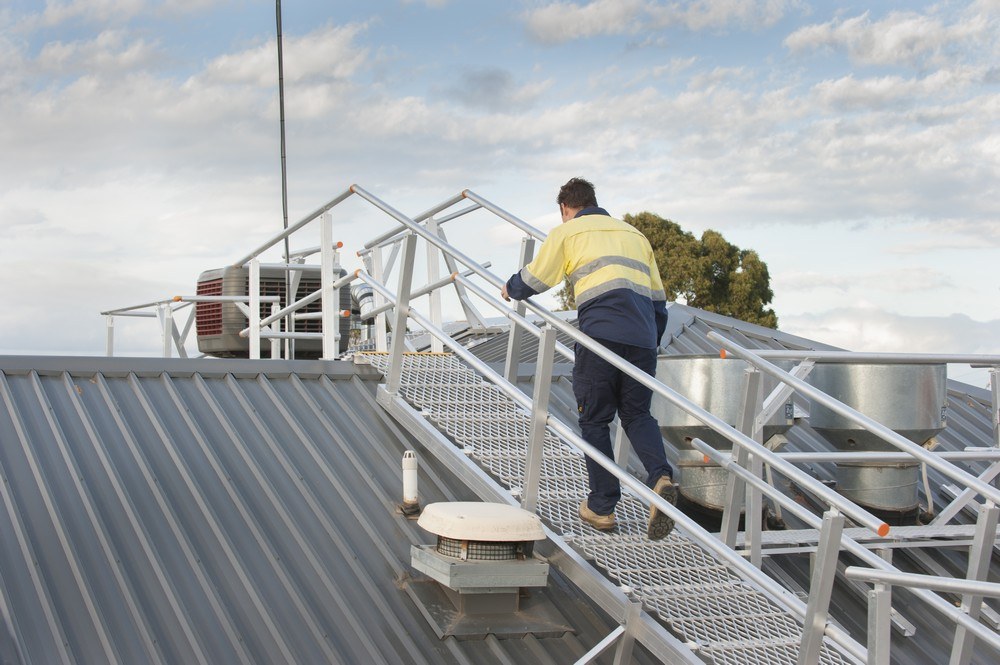
Not sure what equipment needs inspection?
Our expert team is here to guide you through your compliance journey.
Book a call with your local height safety specialist to discuss your inspection requirements.
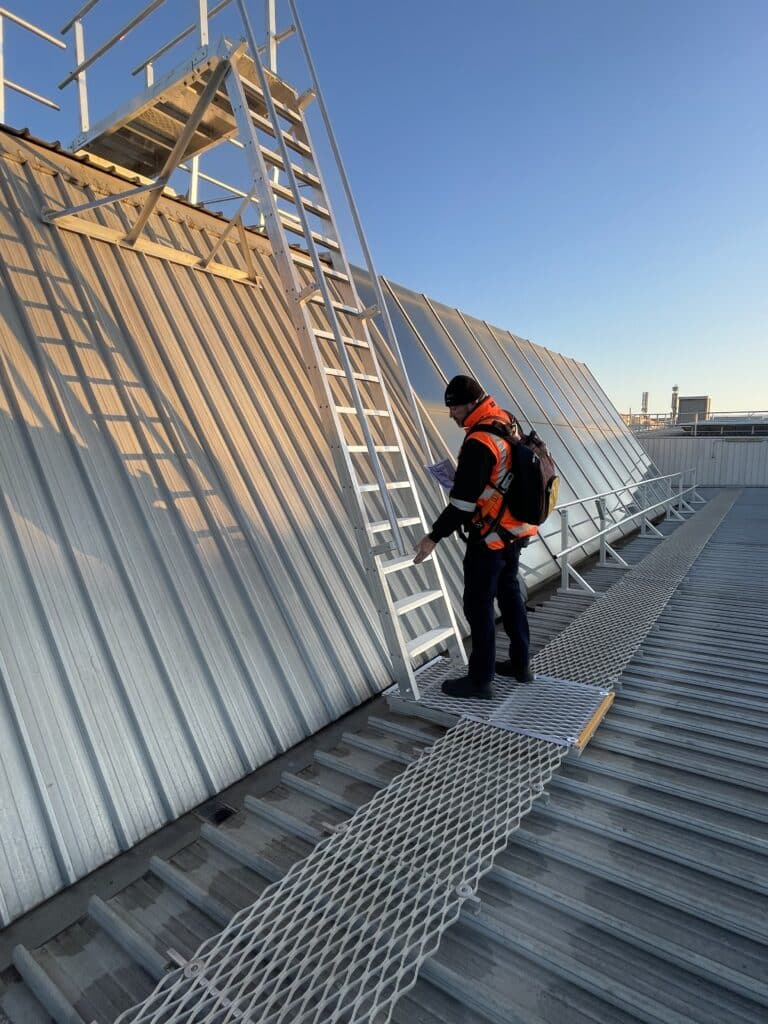
How to maintain ladder compliance?
While ladders are one of the most used height safety devices, they are often missed on equipment asset registers. This leads to many businesses unaware of how many ladders are in use, on-site or in the field. This results in many ladders missing compliance checks as no one knows they exist.
The key to maintaining ladder compliance is keeping an up-to-date asset register. That’s why we test and tag all equipment during your inspection. All information is then uploaded into our online customer portal so you have a complete digital asset register on hand, at any time.
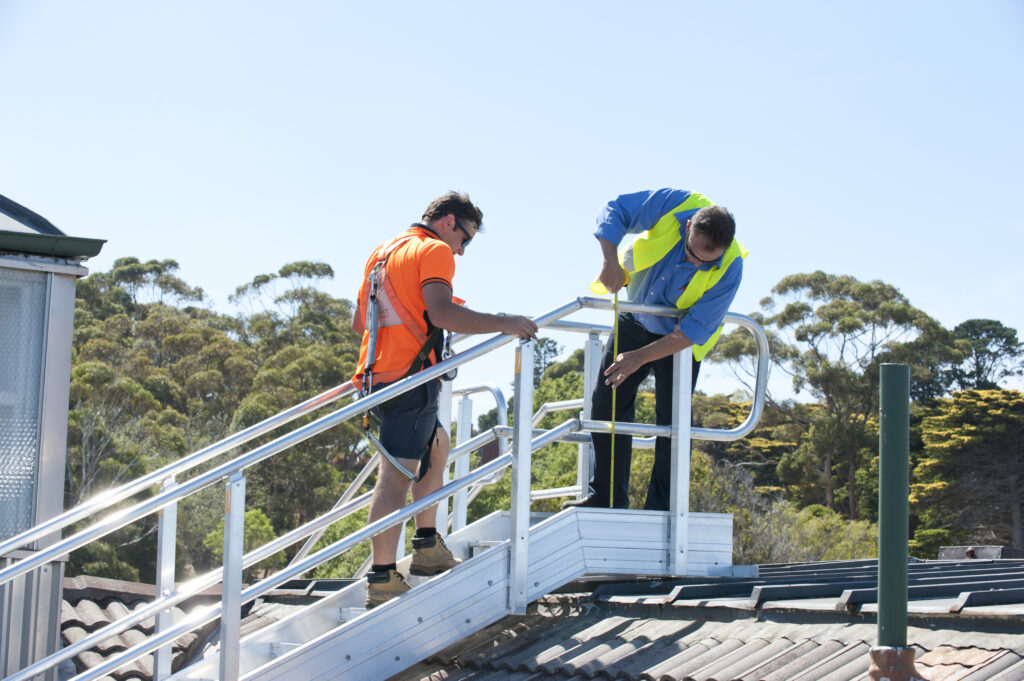
Workplace Access and Safety:
Your height safety and fall prevention experts
Independent height safety experts
- Independent height safety experts
- 45 years’ industry experience
- National certified specialists, inspectors and engineers
- Height safety advice, risk assessments and consulting
Combining years of practical experience and industry expertise, you can be confident in the compliance and safety of your system.
From site assessments and system design to testing, inspections and certifications, we’re here to provide expert advice to keep your business protected and workplace safe.
Level up your compliance
Expert tips, tricks and advice from our height safety experts, straight to you.






